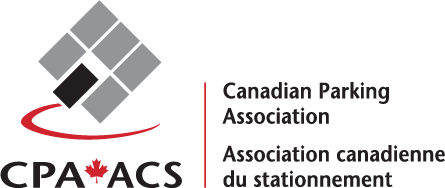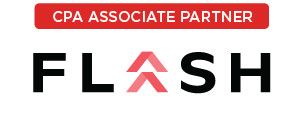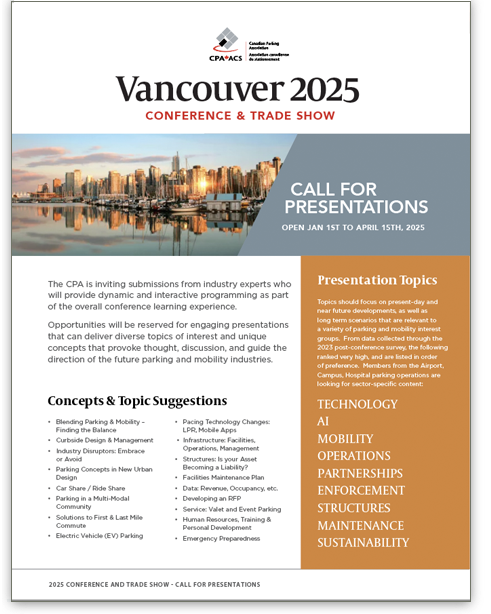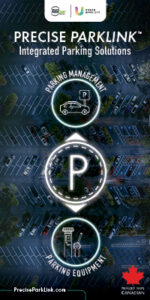By Todd Tucker
The Smart City. It has been the goal of urban planners and municipal leaders for years. When planners and politicians picture a smart city, they see an urban environment where technology and data collection improve the quality of life and the sustainability and efficiency of city operations.
For many communities, the most important manifestations of smart city planning revolve around mobility and parking. If visitors to an urban center can get to their ultimate downtown destination quickly, directly, and safely, the benefits are significant. Roads become less congested and, as a result, safer; the quality of life improves because of this reduced congestion; and local businesses are more likely to thrive because it’s easier for patrons and employees of local businesses to get downtown.
Smart city success is built on technology, and parking technology is the key. Specifically, parking guidance technology. Drivers need to park and making it easier to park will dramatically reduce congestion on city streets. There are several apps serving Canada that can provide basic information about where parking is available in a given city and how much it costs. But most are missing an essential element: occupancy data. These apps aren’t as useful as they could be if they don’t tell users whether there’s parking available in the parkade they’re choosing.
That’s why parking guidance technology is the driving force behind smart city parking planning. The technology already exists, and it’s up to Canada’s cities to implement those technologies.
The Power of Data
Smart cities run on data—data about where parking is available at that moment. The technology to produce the data is available, but so far, most cities and private parking owners haven’t taken full advantage of it.
Parking guidance technology makes it easy to…
By Brian Wolff
Over the past decade, municipal parking has become extremely data centric. As municipal parking administrators have come to rely increasingly on technology to improve the parking experience, they’ve discovered that these same tools can provide valuable operational data that can be used to manage parkades more efficiently and effectively.
PARCS systems, parking guidance, LPR, and mobile payment apps are wonderful management tools that provide important utilization data. Need to know how full your lot or parkade is, and when it tends to be most full? These technologies can tell you, often in real-time on any device. Want to know what types of parkers are using your parkade, an automated permitting program tied to your PARCS system can tell you that.
It’s obvious why these types of data are so valuable. Benchmarking is an essential element of any parking management program. If you understand your parking trends you can make sensible decisions about how to manage your parking programs. It’s why so many parking owners and operators rely on their PARCS and guidance tools for data.
Ask the Customer
But if you are focused solely on utilization data, you are only getting half the story; and you may not be getting the most important half. As important as it is to know who is parking in your facility, and when, it’s even more important to know how their experience was. Did they have trouble getting in and out of the parkade or lot? Did their payment go smoothly? Did gates and ticket machines work as expected? These are essential issues if you want to earn repeat business from parkers.
The most obvious way to get this information is by surveying customers. Hearing about parkers’ experiences straight from their own mouths is the best way to see how…







